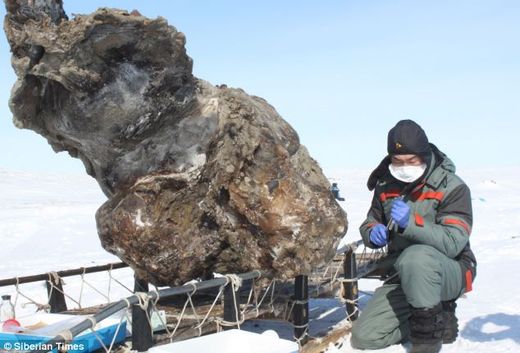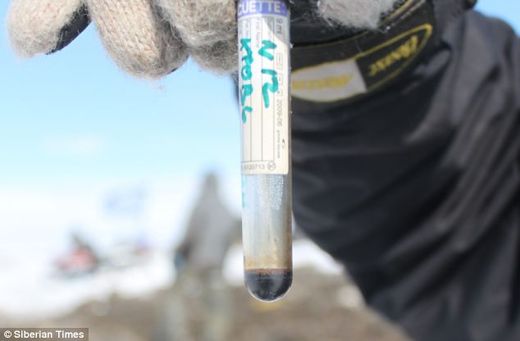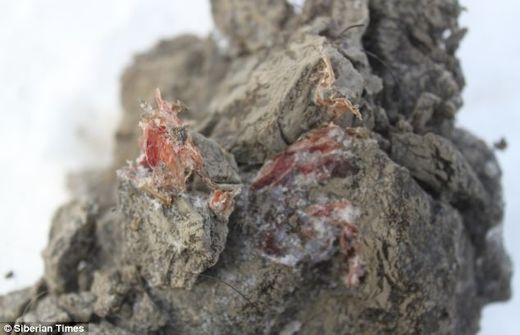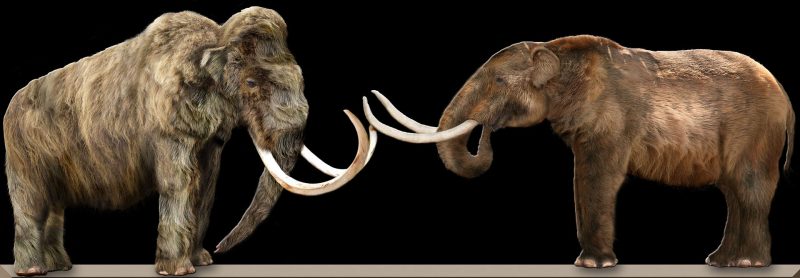Scientists today are researching the frigid areas of the globe. Russian scientists who have been working in the Arctic for months have discovered something extremely fascinating. They found a frozen woolly mammoth carcass in Siberia, with spear wounds that suggest that people actually lived in the Arctic regions thousands of years earlier than previously thought.
The mammoth was excavated from a bluff on Yenisei Bay on the Arctic Ocean. The scientists believe it was killed by hunters 45,000 years ago, which is the earliest indication of human presence in the Arctic. According to senior research scientist at the Russian Academy of Sciences’ Institute for the History of Material Culture, Vladimir Pitulko, the oldest evidence of humans in the Arctic region had been dated to around 30,000 years ago, give or take.

Photo Credit: Siberian Times
He also said that since people lived in the harsh conditions, they were most likely hunter-gatherers. During the time, the woolly mammoth was the largest land animal in the region. If they managed to kill one, its flesh would have proved to be an excellent source of food for many people. Most other parts of the animal could be used as well — fat and marrow for food, feces for fuel, ivory and bones for tools.
Pitulko added that the tongue and liver were considered a delicacy. However, the hunting for ivory was the most important. While we think of ivory today as valuable in the trading business, the hunter-gatherers used the ivory as a wood substitute, since there were no trees anywhere in sight.

Photo Credit: Siberian Times
As the scientists looked at the mammoth closer, they found indications that the mammoth had, indeed, been killed by humans. There was damage to its ribs, appearing to have been caused by the spears the humans used, and a shoulder-blade and cheekbone injury caused by hand-held daggers, as well as damage to its tusk.
Due to the fact that it was trapped in a glacier this specimen was the best preserved mammoth ever found so far. It even had bits of hair left on its body. The mammoth was so preserved that they were able to determine the sex of the animal – it was a female. From the tissue left on the carcass, they were able to identify her age at about 50 to 60 years old at the time of death. The scientists are hoping to draw blood from the carcass and will hopefully one day be able to re-create the wolly mammoth.
Although finding an entire mammoth carcass is amazing, scientists do not care about it as much as they do about the human-made wounds. Pitulko said that the mammoth was killed by humans and the evidence cannot be mistaken.

Photo Credit: Siberian Times
Scientists believe that mammoth hunting was probably one of the things that helped the people move about and therefore survive in the first place. Since the people were most likely hunter-gatherers, that meant they would have to pick up and leave the area after they had used up all of their resources, making the trek across the Arctic. Many scientists believe they made the trek from Siberia over the Bering land bridge. At the time, the Bering land bridge had attached Siberia to Alaska.

Not only are these people the first humans found in Siberia, thousands of years before the original date scientists believed, but these hunter-gatherers were the first humans to reach the New World using that route. From the Bering land bridge, those people spread throughout the Americas.
After scientists finished examining the mammoth, she went on display in Yokohama, Japan.